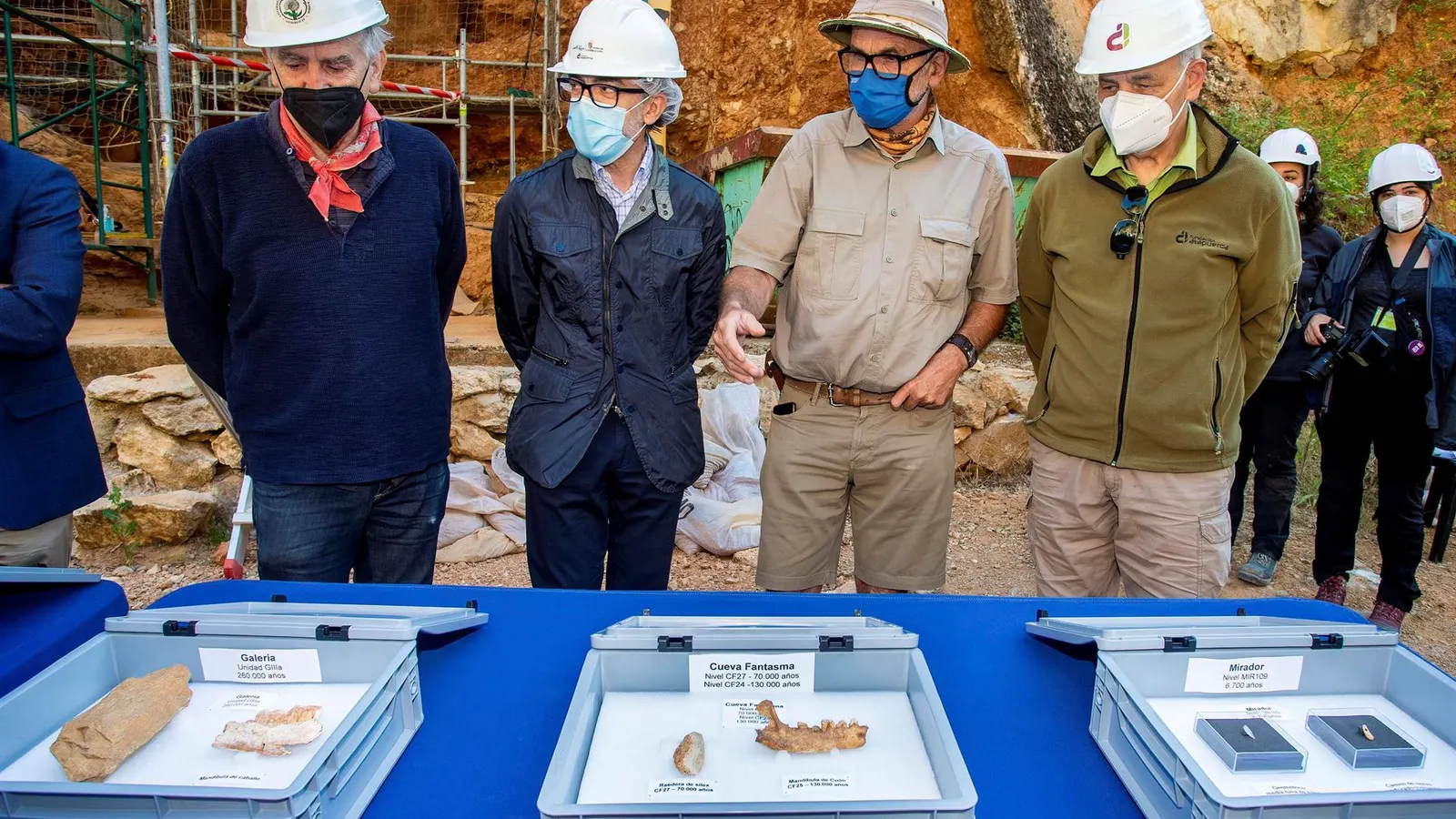A small flake of quartz is proof that the arrival of the first European populations to the Sierra de Atapuerca dates back to 1.4 million years ago, a period with little evidence of human occupation in Europe.
The find has been located at level 7 of Sima del Elefante, during the annual excavation campaign that took place this July. This, together with the discovery of the lithic industry at the TD8 level of Gran Dolina 700,000 years ago, supports the continued human presence in the Sierra during the last 1.4 million years, something exceptional in the continent.
Also at the same level of the Sima del Elefante, skeletal remains of different taxa have been recovered, among which those of suido and turtle predominate, which reinforce the interpretation that the Atapuerca Research Team had previously proposed, according to which the environmental conditions of the place more than a million years ago they were more temperate and humid than today.
Species from 900,000 years ago
On the other hand, in-unit TD4 of Gran Dolina numerous skeletal remains of species that inhabited Europe 900,000 years ago have been found, such as a hip and jaw of a rhinoceros of the Stephanorhinus etruscus species in an extraordinary state of conservation, which matches and matches the rhino skull that was recovered in 1991.
In addition, a Neogene flint flake has been recovered in this same unit, accompanying a good representation of fossils of bears, large bovids, horses, and deer that shows that 900,000 years ago they were used to living among large animals.
Regarding the TD8 level of Gran Dolina, whose intervention began last season and which made it possible to fill a gap of human evidence in Europe dating back 700,000 years, it has been possible to expand the collection of tools, as well as fauna remains that will allow in a future study the time and environment of the Sierra de Atapuerca.
In Cueva Fantasma , a great appearance of lithic industry stands out, which has been registered in comparison with previous campaigns, among them several scrapers of excellent workmanship, a flake of flint with marks of use of around 70,000 years. Regarding the fauna, a large number of bones have been collected, in the form of large accumulations, the horse is the best-represented species, as well as parts of a deer and a large bovid.
In Galerí a, the typical Acheulean industry -bifaces-, with 260,000 years old, where more than 1,500 remains have been found that facilitate knowing the full operation of the cavity as a place for obtaining meat resources by human groups from the Middle Pleistocene of the Sierra de Atapuerca, that is, pre-Neanderthals.
In the cave of El Mirador, the findings made continue to provide relevant information on the importance of livestock practices and the culture of the first pastoral and agricultural communities that colonized these lands during the Neolithic Age. It has been possible to document combustion episodes dating back to 6,000 years, related to the burning of the manure of the herds that were kept in the cave, a practice aimed at reducing the volume of waste and eliminating parasites.
Remains of fetuses and neonates of sheep and goats have also been found recovered in this area, which, together with the high presence of progesterone detected in the manure through analytical chemistry studies, suggests that it was the place where they were kept. females during the final phase of gestation and young with their mothers in the first days of life.
Remains of "rare" cultural materials in the area
In another sector of the cavity, some 6,700 years old, numerous remains of material culture have been obtained, being the case of various ornaments, among which pendants made with perforated deer canines and fragments of marble bracelets stand out.
These are rare remains, especially bracelets since this type of marble ornaments are located in Andalusia and the Levant and it is probably a prestigious item that arrived in Burgos through exchange networks.
In this edition of 2021, a total of 180 people have participated who have worked in the different sites open so far in the Sierra de Atapuerca, practically recovering the normal rhythm of excavations before the pandemic.
Other important finds in the area
In 2008, at the Sima del Elefante site, a jaw fragment dating to 1.3 million years was recovered, which is the oldest human bone remains documented in the Sierra de Atapuerca and which was cataloged as Homo sp. say, indeterminate.
More recently, in 2013, a small lithic tool dating to around 1.4 million years old was discovered.




0 Comments